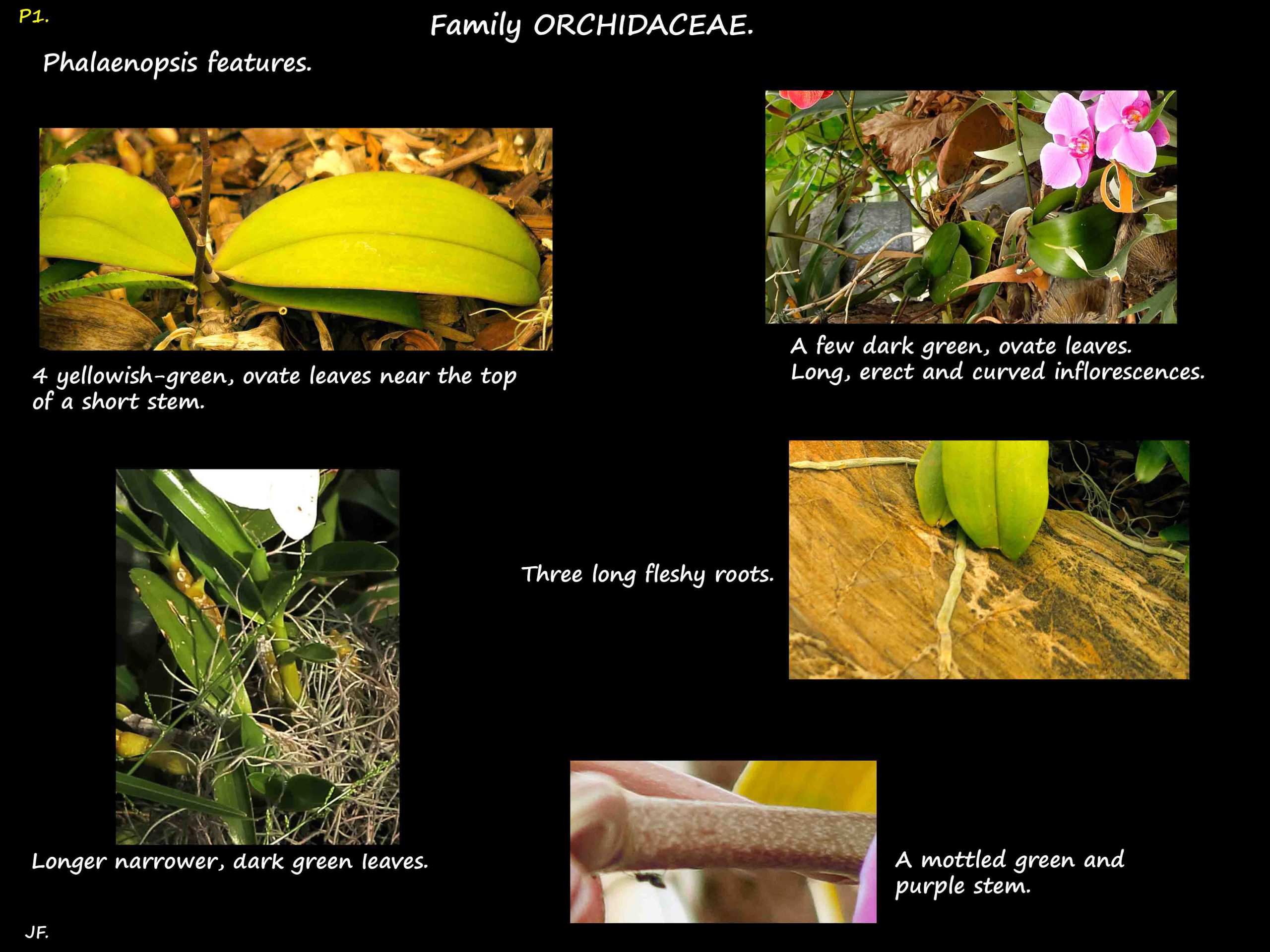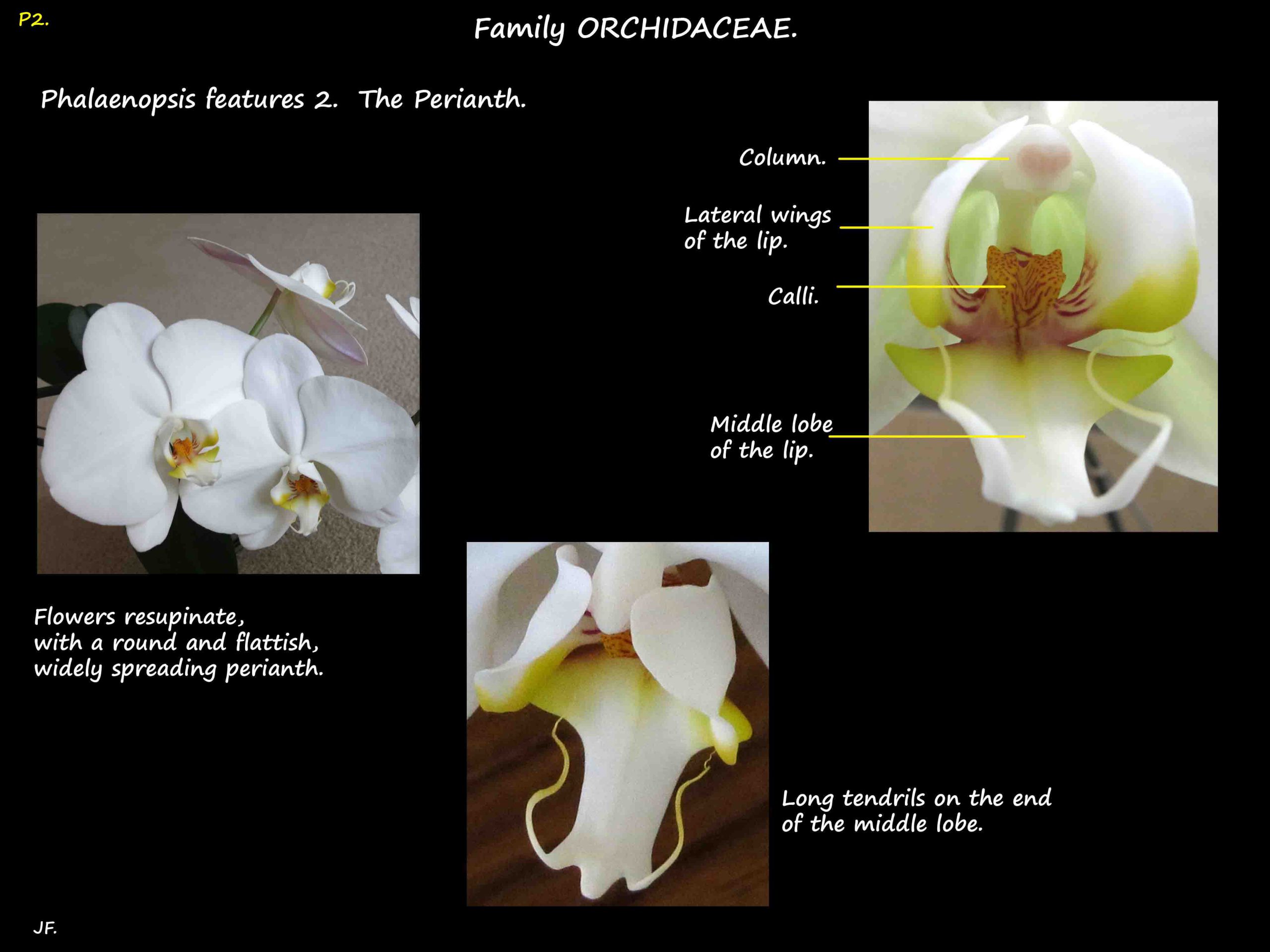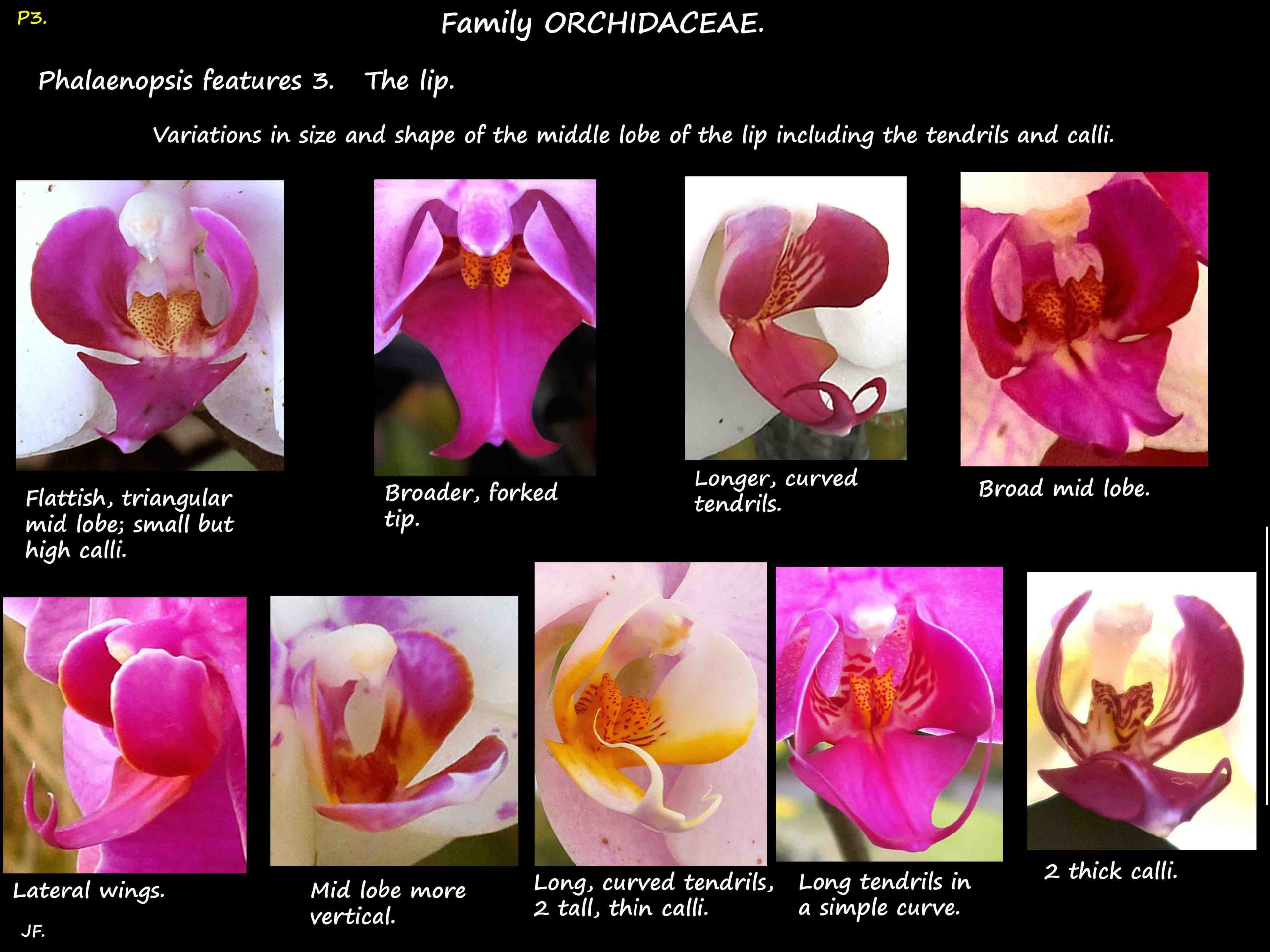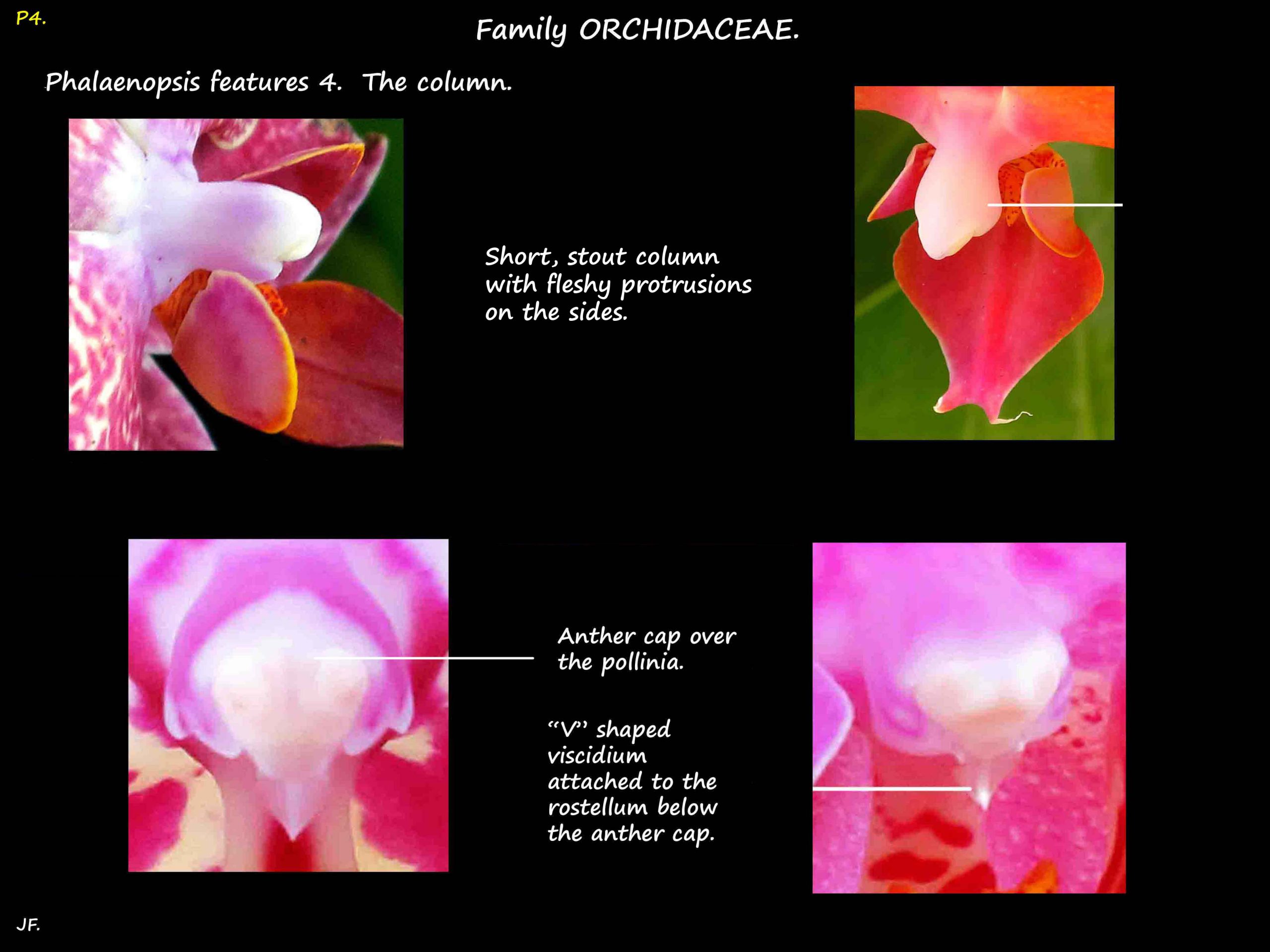Phalaenopsis orchids.
Phalaenopsis is a vandanaceous genus with about 60 species found in Australia and S.E. Asia.
They are known as moth orchids.
Phalaenopsis are mainly epiphytic with some terrestrial or rock growers.
They are anchored by basal roots and can also have aerial roots.
Stems, sometimes branched, are up to 1 m long with no pseudobulbs.
Stems mostly horizontal in natural conditions on trees but sometimes erect.
Leaves are usually permanent but sometimes deciduous.
One or two new leaves form each year and a stem usually has about 4 but up to 10.
They can be small or large, oblong or elliptic, thin or succulent, mainly drooping but can be erect.
Most have dark green leaves with slightly paler undersides.
Some are shaded in brownish-red and another group have leaves marbled in grey or purple.
Axillary inflorescences can be from a few cms up to 1 m or more long.
Stalks are dark green, purple, brown or marbled (matching their leaves).
Resupinate flowers, with bracts of various types, are few to many per inflorescence.
Most have flattish flowers with a widely spreading perianth.
The perianth can be thin or fleshy.
The sepals and lateral petals are free and may or may not be similar.
The lateral sepals are usually larger than the dorsal one.
The perianth can occur in a wide range of plain colours or be spotted, lined, marbled etc.
The small, horizontal, 3-lobed lip is situated below the column.
It is continuous with the column foot and is sometimes sac-like.
The lateral lobes are erect.
The middle lobe is variously shaped, velvety or hairy and may have a pair of long apical tendrils.
There are frequently yellow nectar guides on the lateral lips and a red area inside.
There are 1, 2 or 3 ridges or calli which can be branched, toothed, fringed, or glandular.
The variations in the lip are important in identifying species.
The stout column can be straight or slightly curved and is wider at the tip.
It has no wings but often has fleshy protrusions.
There is a rostellum, with a viscidium, below the 2 or 4 pollinia.
The 6-grooved seed capsules can be green or with reddish shades.
Phalaenopsis hybrids.
Natural hybrids.
There are only a few with parent species involved including P. aphrodite, P. amabilis, P. bellina,
P. sanderiana, P. schilleriana, P. stuartiana, P. sumatranam and P. violacea.
Intergeneric hybrids.
These are hybrids with a Phalaneopsis species (especially P. amabilis, P. aphrodite and P. schilleriana)
and between 1 to 4 species from related genera such as Aerides, Arachnis, Ascocentrum,
Ascoglossum, Diploprora, Doritis, Eurychone, Gastrochilus, Luisia, Neofinetia,
Paraphalaenopsis, Renanthera, Sarcochilus, Trichoglottis, Vanda and Vandopsis.
For example Doritaenopsis is a group of thousands of hybrids between Doritis and Phalaenopsis.
It is now included under Phalaenopsis.
Doritis have dark reddish flowers and this contributes to the red lip in many hybrids.
Doritis can also hybridise with other species in the Vanda group.
J.F.





